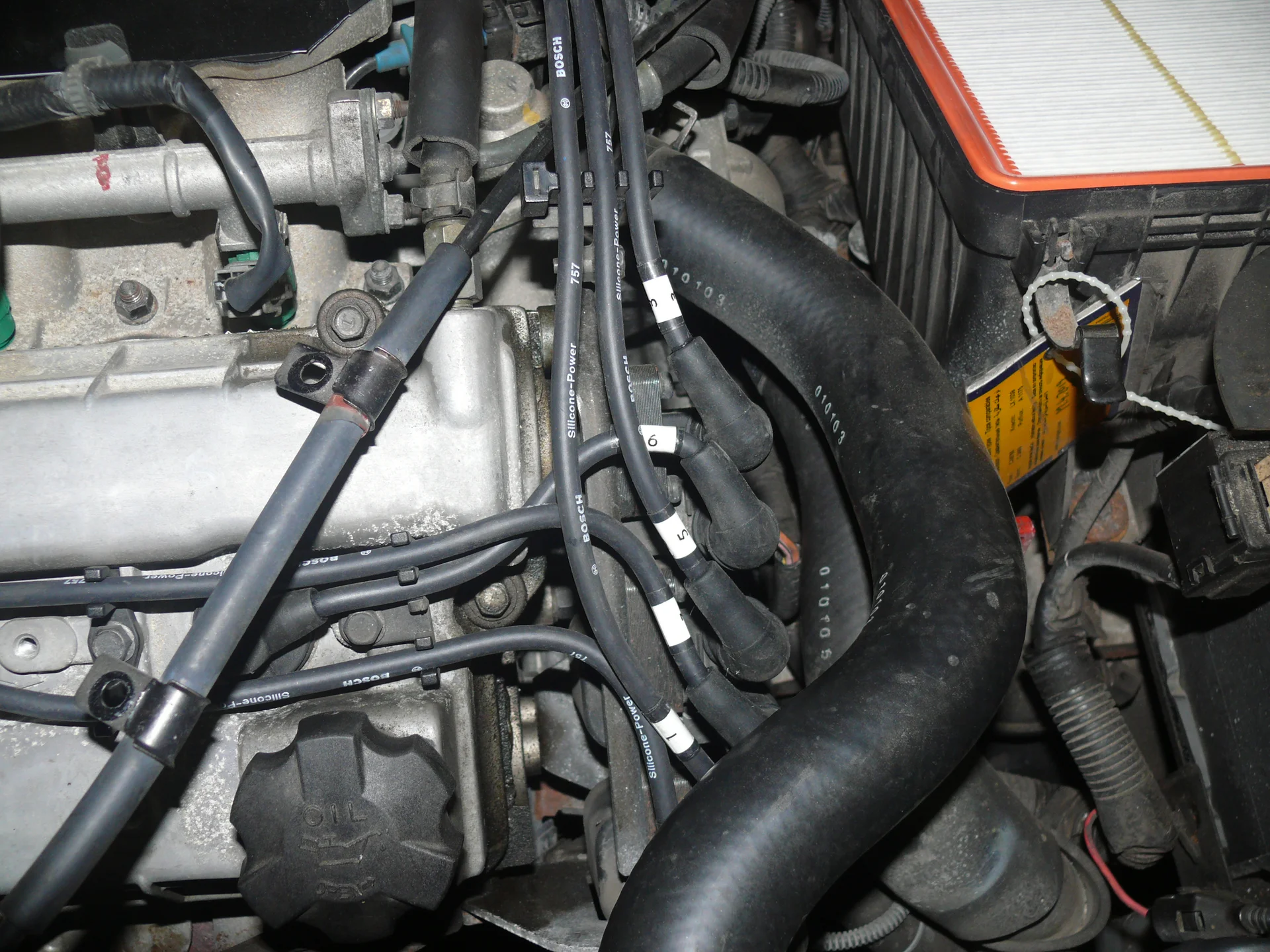The 2004 Hyundai Sonata 2.7 is a popular sedan that combines style, comfort, and reliability. It features a V6 engine known for its smooth performance. Understanding the firing order of this engine is essential for maintenance and repair tasks. This article provides a comprehensive overview of the 2004 Hyundai Sonata 2.7 firing order, its significance, and other related information.
Understanding Engine Firing Order
The firing order of an engine is the sequence in which the cylinders fire. It is crucial because it impacts the engine’s performance, efficiency, and smoothness. In a V6 engine like the one in the 2004 Hyundai Sonata, the firing order establishes how the engine’s power is delivered. If the firing order is not followed properly, it can lead to poor engine performance, misfires, and increased emissions.
Firing Order for the 2004 Hyundai Sonata 2.7
The firing order for the 2004 Hyundai Sonata 2.7L V6 engine is 1-2-3-4-5-6. This numeric sequence indicates the order in which each cylinder ignites. The cylinders are arranged in two banks, with three cylinders in each bank. Understanding this sequence is vital for tasks such as engine rebuilding, tuning, or even changing the spark plugs.

Importance of Correct Firing Order
Following the correct firing order is essential for several reasons. Firstly, the engine’s power needs to be delivered evenly and smoothly to prevent vibrations. An incorrect firing order can lead to issues like engine misfires, which can cause a rough idling experience or even a complete breakdown.
Secondly, in a V6 configuration, the firing order affects how the engine’s components work in harmony. Proper timing in cylinder firing results in optimal combustion, promoting fuel efficiency and minimizing harmful emissions. Moreover, keeping the correct order helps in avoiding knock, which can lead to engine damage over time.
Cylinder Configuration of the Sonata 2.7
The 2004 Hyundai Sonata 2.7 features a V6 engine with six cylinders arranged in a V configuration. This design offers a balance between power and efficiency. Each bank of cylinders works together to produce a smooth and powerful output. Understanding the alignment and configuration of these cylinders is vital for anyone working on the engine.
In the 2004 Sonata, the cylinders are numbered as follows:
- Bank 1 (front of the engine): Cylinder 1 (closest to the front of the car), Cylinder 2, Cylinder 3.
- Bank 2 (rear of the engine): Cylinder 4, Cylinder 5, Cylinder 6.
Knowing the cylinder numbers helps in identifying the right spark plugs to replace and determining which parts of the engine require attention.
Diagnosing Issues Related to Firing Order
If your 2004 Hyundai Sonata is experiencing issues, understanding the firing order can help diagnose potential problems. Misfires, rough idling, or reduced acceleration might suggest a firing order problem or issues with individual cylinders.
For instance, a misfire can occur if a spark plug is faulty or if the ignition coil is not functioning properly. Ignition components must fire in the correct order for optimal performance. If you notice a flashing check engine light or a decline in fuel efficiency, these could be signs that you need to investigate further.
Maintenance Tips for Keeping the Firing Order Correct
To maintain your 2004 Hyundai Sonata’s firing order, follow some recommended practices. First and foremost, regular maintenance of spark plugs and ignition coils is a must. Over time, these components can wear out and fail to provide the necessary spark to the cylinders.
Check the owner’s manual for recommended service intervals for changing spark plugs, which is often between 60,000 to 100,000 miles. When replacing spark plugs, ensure they are installed in the correct firing order. Also, routinely inspect the ignition system for any signs of wear or damage.
Common Problems Related to Incorrect Firing Order
Using the incorrect firing order can lead to a spectrum of issues for the 2004 Hyundai Sonata. Some signs of these problems include rough engine performance, poor fuel economy, and unusual sounds coming from the engine. If you experience these symptoms, it’s essential to diagnose the issue immediately.
Additionally, an incorrect firing order can cause a cascading effect on engine components. It may lead to increased wear and tear on parts, creating a need for more frequent repairs or replacements. Over time, this can add an unnecessary financial burden and cause prolonged downtime for the vehicle.
Improving Engine Efficiency
Improving engine efficiency is an overarching goal for many vehicle owners. In the context of the 2004 Hyundai Sonata 2.7, maintaining the correct firing order plays a crucial role in this endeavor. A well-tuned ignition system will enhance fuel combustion, allowing the engine to produce optimal power while consuming less fuel.
Additionally, consider using high-quality fuel and regular oil changes to promote longevity and efficiency in the engine’s performance. By ensuring that the components within the firing order are functioning correctly, you can maximize efficiency and enjoy a smoother driving experience.
Conclusion
Understanding the firing order of the 2004 Hyundai Sonata 2.7 is vital for anyone looking to maintain or repair the vehicle effectively. The firing order 1-2-3-4-5-6 plays a critical role in the engine’s performance, efficiency, and longevity. By following best practices for maintenance and promptly diagnosing issues, owners can ensure their Hyundai Sonata runs smoothly for years to come. Whether you are replacing spark plugs or tuning up the engine, keeping the firing order in mind will lead to better performance, improved fuel efficiency, and overall longevity of the vehicle.
FAQs
1. What are the signs of a misfire in my Hyundai Sonata?
Common signs of a misfire include rough idling, a decrease in power while accelerating, or a poor fuel economy. The check engine light may also illuminate.
2. How often should I replace spark plugs in my Sonata?
It is generally recommended to replace spark plugs every 60,000 to 100,000 miles, but you should consult your owner’s manual for specific recommendations for your vehicle.
3. Can I drive my Hyundai Sonata with a misfire?
While it might be tempting to continue driving, it is not advisable. Continuing to drive with a misfire can cause further damage to the engine and other components.
4. What should I do if I suspect a problem with the firing order?
If you suspect an issue, it’s best to have your vehicle checked by a professional mechanic. They can accurately diagnose the problem and ensure everything is in order.
5. How can I improve my Hyundai Sonata’s fuel efficiency?
Improving fuel efficiency can involve maintaining your vehicle regularly, using high-quality fuel, ensuring proper tire pressure, and making sure that engine components—including the ignition system—are functioning correctly.



